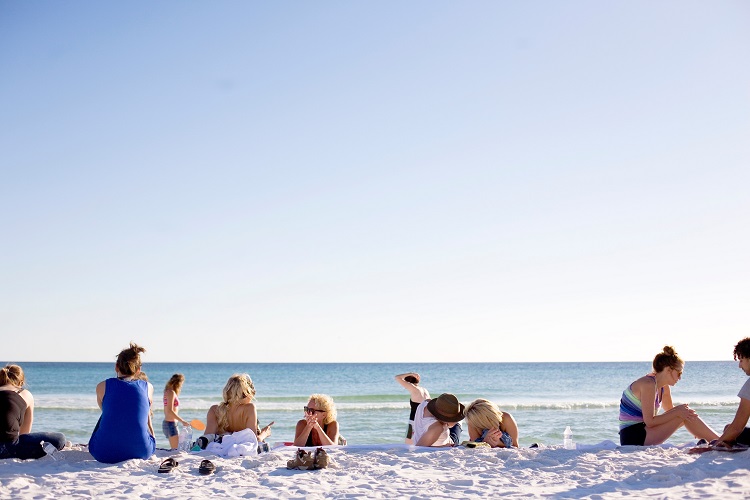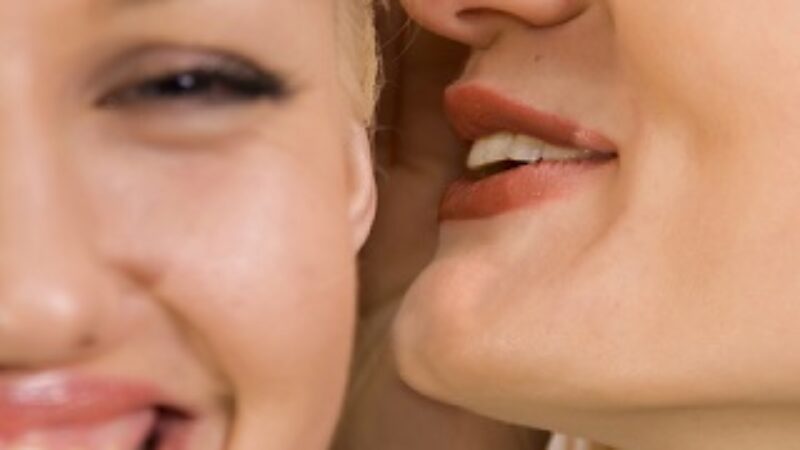For many of us in Canada and the United States, summer doesn’t really start until the first week of July when we each celebrate our national holidays: Canada Day on July 1st and Independence Day on July 4th. And whether we live north or south of the 49th parallel, celebrating often means spending a good part of the day at the beach, watching parades, listening to live music or spending time with family and friends at a grill fest. One sure way to ruin the day is by ending up with a painful sunburn. You’d think sunscreen application would be second nature by now, but there are many sunscreen myths that still persist, despite all the available information.
Here are 6 persistent sunscreen myths – busted:
1. Dark Skin Has Natural Sun Protection. Yes, darker skin is less likely to get sunburned, but it is not immune to developing skin cancer. In fact, even though skin cancer is less common amongst darker skinned individuals, when it does occur, it is typically more aggressive and diagnosed later, leading to more deaths.
2. All Sunscreens Leave a White Finish on the Skin. Say goodbye to those chalky white sunscreens of yesteryear. Many sunscreen lines now feature products formulated without ingredients that typically have left behind a white finish on some skin tones. La Roche Posay’s Anthelios SPF 60 Ultralight Lotion uses a combination of sun filters, including patented Mexoryl XL and Mexoryl SX, to deliver excellent protection against UVA and UVB rays with a dry touch finish and no white marks, even on dark skin.
The options for a natural sunscreen that doesn’t leave a white finish are scarce. That’s why we’re so happy to be able to introduce new Apothekari Shade SPF 30, an all- natural sunscreen formulated with 13.5% zinc oxide (Zinclear) that is non-whitening and designed for all skin types. In addition to delivering broad spectrum UVA/UVB protection, Shade SPF 30 also contains red algae and ergothioneine to fight free radicals and promote healthy skin. There’s no excuse now for not using sunscreen!
3. Those with Sensitive Skin Can’t Use Sunscreen. When it comes to sensitive skin, formulations using physical sun filters tend to be better tolerated than chemical based ones. Ingredients like zinc oxide and titanium dioxide work by sitting on top of the skin and both blocking the absorption of UV rays and deflecting them away from the skin’s surface. Apothekari Shade SPF 30, mentioned above and Neostrata Protective Lotion SPF 45, with both titanium dioxide and zinc oxide, is suitable for even the most sensitive skin.
Sensitive skin may also better tolerate children’s formulations, which are designed for youngsters’ delicate skin. Anthelios SPF 50 Dermo-Kids Lotion uses a combination of titanium dioxide and newer chemical sun filters like Mexoryl XL and Mexoryl SX. Tested under pediatric control, this non-greasy sunscreen has been rigorously formulated to provide excellent protection against sun’s harmful UVA and UVB rays.
4. There’s Little Difference Between SPF 15, SPF 30 and SPF 50. A sunscreen with a rating of SPF 15 filters out about 93% of harmful rays; SPF 30 will blocks out about 97% and SPF 50 or higher will filter out approximately 98%. In theory, there may not be a huge difference between the three but considering that most of us only apply between 1/4 and 1/2 of the recommended amount in order to obtain the full SPF listed on the label, we are, in practice, getting only a fraction of the protection. The general rule of thumb is 1 ounce for the entire body. If you’re applying just to your face, 1/4 teaspoon is generally considered an adequate amount. Given the choice, go for the sunscreen with the higher SPF.
5. Higher SPF Means Fewer Reapplications. The SPF rating system, developed in 1962, measures the length of time a sunscreen will protect you from the burning UVB rays compared to how long it would take you to burn with no protection whatsoever. For instance, if you typically burn in 10 minutes, an SPF 30 product should give you protection for 10 minutes x 30, so 300 minutes. However, this is very much dependent on applying adequate amounts, something most of us do not do (see myth #4 above). Sunscreen with a higher SPF is not impervious to a decline in effectiveness due to UV exposure, sweating, water and even inadvertent wiping off with clothing and hands. And regardless of the SPF rating, sunscreen should be reapplied after drying off. It’s not just water that ends up on the towel.
6. Sunscreen in Makeup is Enough. In a word, nope. While makeup products containing sun filters are no longer the exception, SPF protection in a powder, foundation or primer just isn’t sufficient to protect against those burning and aging UV rays. It’s best to consider it as an extra layer to complement a stable, broad spectrum and dedicated sunscreen that you’re happy to wear every day, rain or shine.
Did one of these myths make you pause and rethink your current sunscreen habits? Then we’ve done our job.




